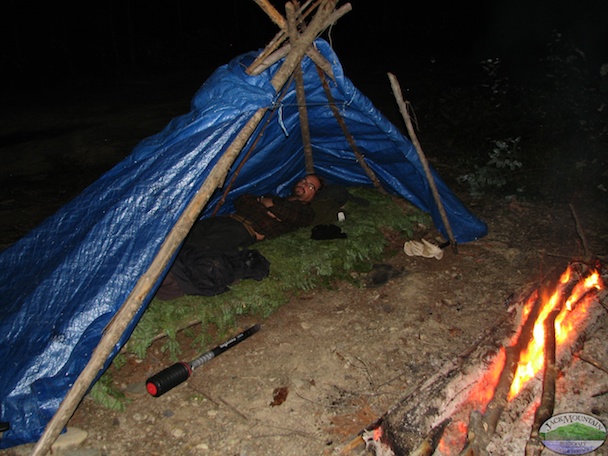I’ve heard the terms bushcraft and wilderness survival used interchangably, and defined by those who base their understanding on what they saw on a tv show. Needless to say I disagree with most of the common definitions floating around these days. The terms are not the same thing, although one is contained within the other.
Wilderness Survival is living through an adverse situation in the wilderness. We run a variety of wilderness survival courses, the aim of which is to provide sufficient training so that if you find yourself in the wilderness and something bad happens, you’ll live to tell the tale. Survival isn’t complicated; it’s knowing what it takes to keep the body alive and functioning. What you need to know can be learned in a short time. What you need to do to accomplish this can take much longer.
Bushcraft is a much larger discipline. Wilderness survival knowledge is a component, but so are a wide variety of other topics. It’s the active component of our interaction with nature. Both art and science, bushcraft is doing, making, crafting, traveling, building and living in the natural world using simple, low-tech tools. Static knowledge, such as how to care for tools, etc., is a small percentage of the discipline. The vast majority is active, dynamic and hands-on.
But bushcraft is just a part of Bush Lore, a larger discipline still. It consists of the combination of bushcraft and nature knowledge. Nature knowledge is an understanding of the natural world, including plants, fungi, lichens, animals, birds, fish, mollusks, insects, amphibians, reptiles, rocks, minerals, soil, water, ice, weather, celestial bodies and ecology, the dynamic interaction of each with the whole. It can be learned but, in most cases, not directly taught. Observation and study are the keys and it’s a lifetime endeavor.
Hopefully this helps to clear up any misconceptions on how we use these terms.









Comments on this entry are closed.